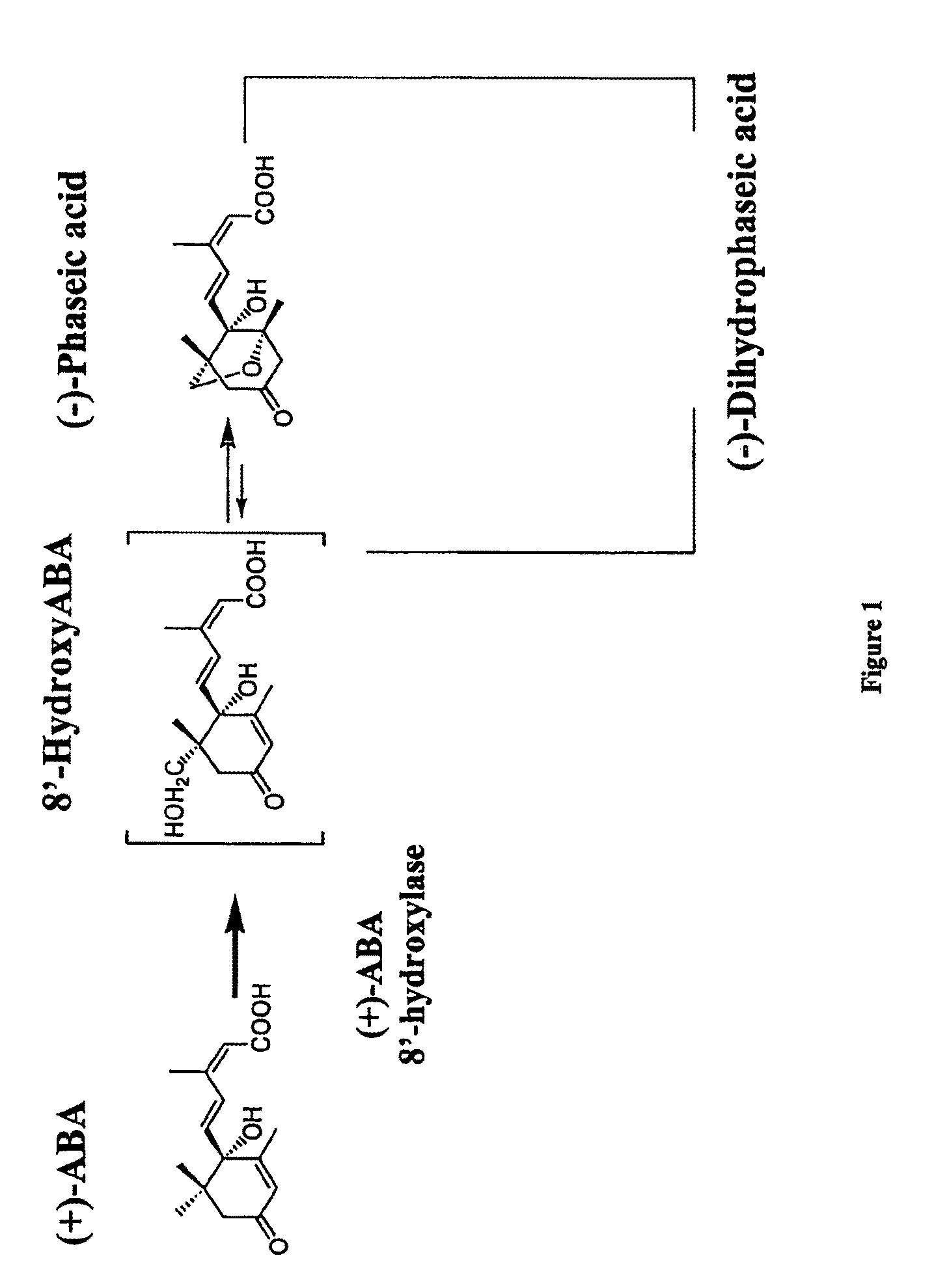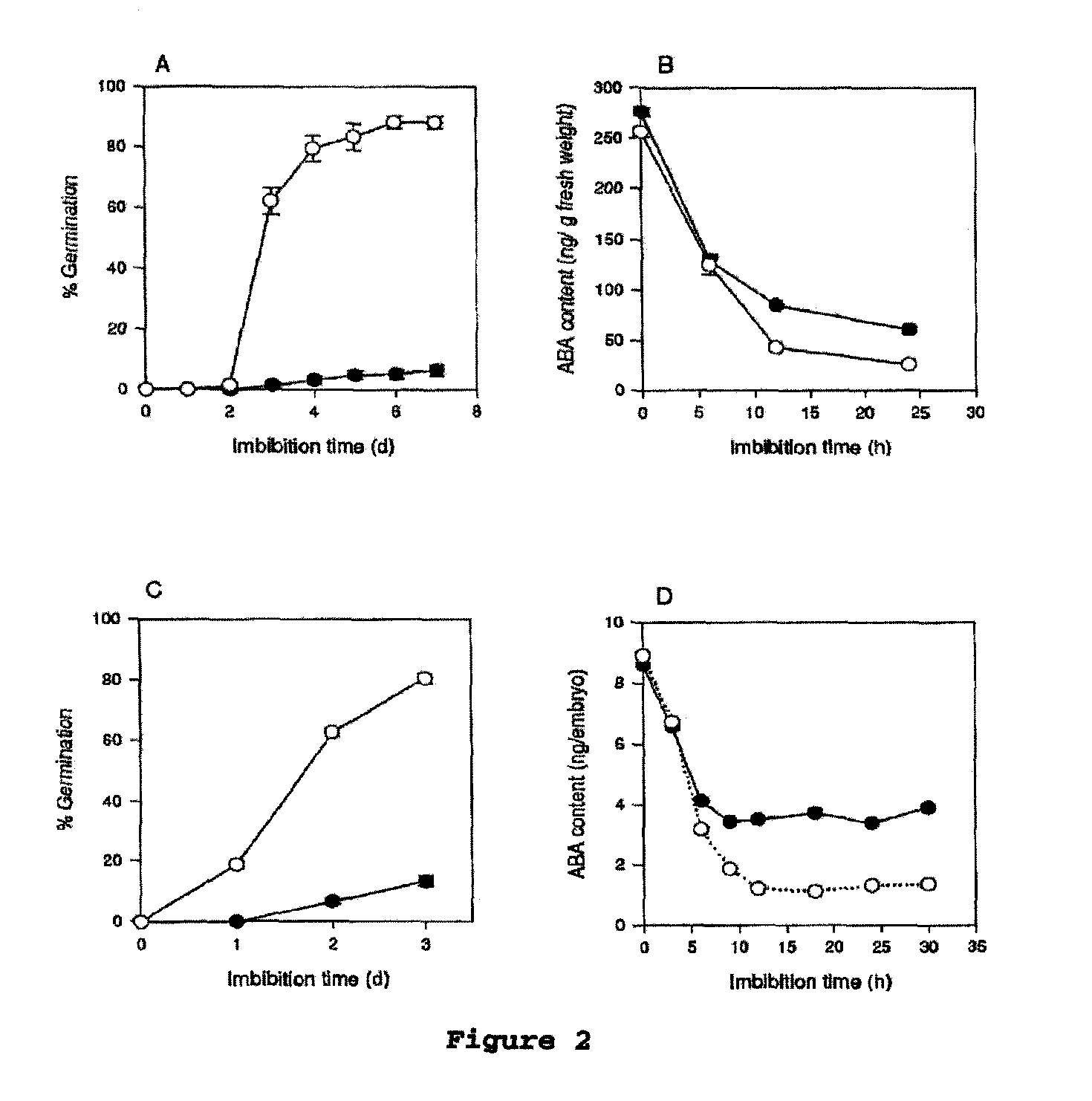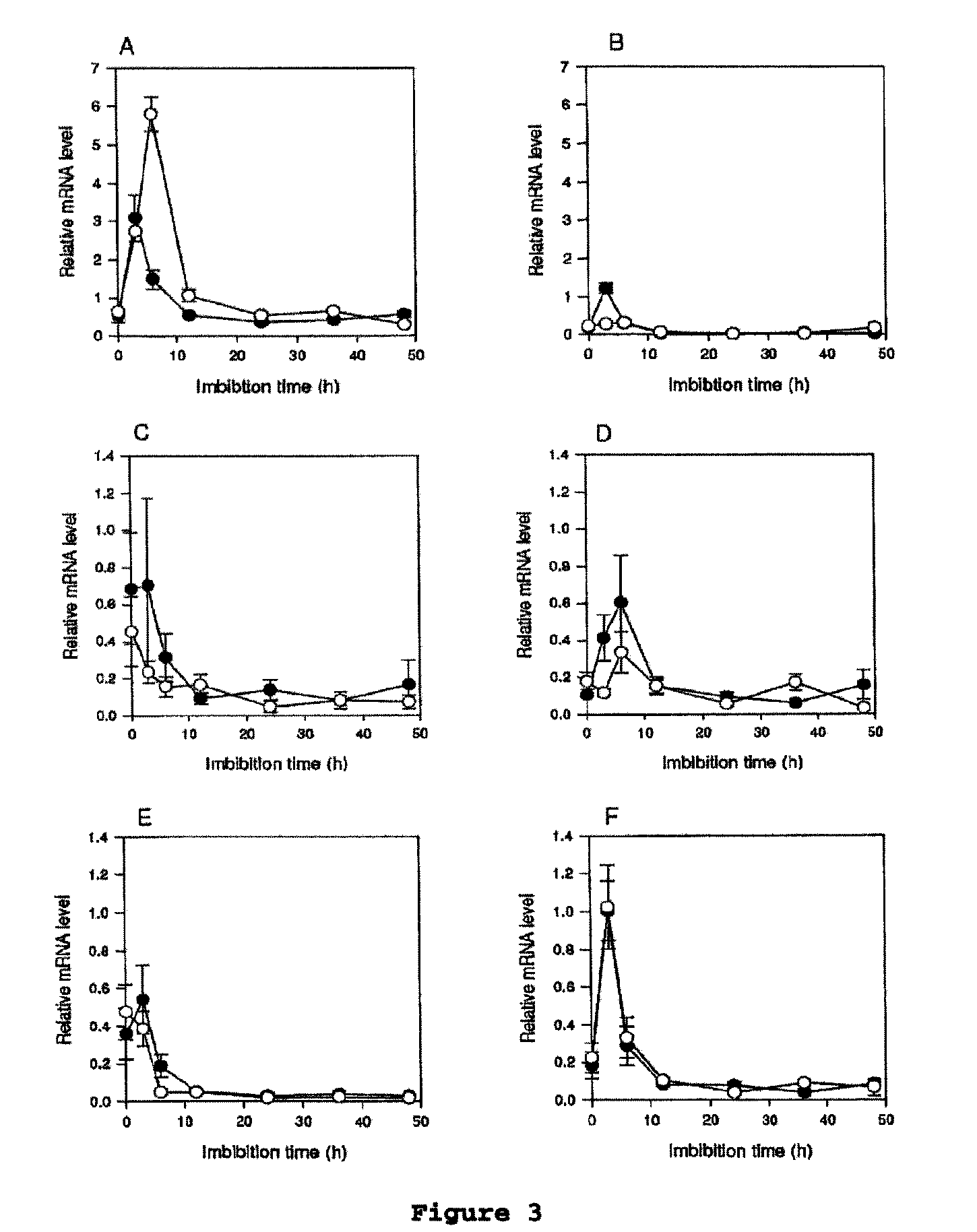Cereals with altered dormancy
a technology of dormancy and cereals, applied in the field of polypeptides and polynucleotides encoding therefor, can solve the problems of limited zep overexpression effect, increased aba levels in mature seed and greater seed dormancy, poor establishment of crops in the field, etc., and achieve the effect of reducing the rate of grain germination rate of plants
- Summary
- Abstract
- Description
- Claims
- Application Information
AI Technical Summary
Benefits of technology
Problems solved by technology
Method used
Image
Examples
example 1
Materials and Methods
Plant Material
[0308]For the generation of dormant Arabidopsis seed, 6-10 plants of ecotype C24 plants were grown per 11 cm pot in soil (46% vermiculite, 35% klassman peat, 18.6% horticultural perlite). Plants were grown in a cabinet set at a 16 h photoperiod, a light intensity of 180 μmol·m−2s−1, and a temperature of 17.5° C., conditions found to be effective in generating high dormancy levels. Freshly mature seed was harvested in bulk 35 days after the petals appeared on the first flowers of plants in the pot. Harvested seed was then allowed to dry out at room temperature for 2 days. Half of this seed was stored at room temperature and dormancy decay was measured until 90-95% of the seed germinated after 7 days (3-4 months). The other half of the seed was stored at −80° C. in screw cap Eppendorf tubes and even after one year of storage, dormancy was maintained in this seed. After cold stratifying the seed by storage at 4° C. in a cold room for 7 days, which bre...
example 2
ABA Measurement in Dormant and Non-dormant Seed of Arabidopsis and Barley
Generation of Dormant and Non-dormant Seeds / Grains from Arabidopsis and Barley
[0351]Arabidopsis (ecotype C24) and barley (cv. Proctor) plants grown under cool temperatures produced seeds (grains) that were highly dormant and required extended periods of after-ripening or stratification to break dormancy (Koornneef et al., 2000, Jacobsen et al., 2002). To analyse dormancy mechanisms in Arabidopsis C24 and barley Proctor seeds, freshly harvested seeds were divided into two samples, with one allowed to after-ripen for 3-4 months to allow dormancy to decay (“non-dormant”, ND) and the other stored at −80° C. to retain dormancy (“dormant”, D). Germination kinetics were compared for both D and ND seed from the same harvest. The data are shown in FIGS. 2A and 2C.
[0352]The present inventors found that 80-90% of ND Arabidopsis and barley seed germinated within a few days of imbibition. In contrast, less than 10% of D see...
example 3
Expression of NCED and ABA8′OH Genes in D and ND Seeds in Arabidopsis
[0355]In Arabidopsis there are four cytochrome P450 genes within the CYP707A subfamily all of which encode ABA8′OH (Kushiro et al., 2004; Saito et al., 2004). Using qRT-PCR we found that AtCYP707A2 was the most highly expressed of these genes in C24 seeds (FIG. 3), which was consistent with previous findings from the Arabidopsis ecotype Columbia (Kushiro et al., 2004). AtCYP707A2 increased rapidly in ND seeds, reached a maximum by 6 h, and decreased thereafter. In contrast AtCYP707A2 expression in D seed increased during the first 3 h of imbibition but declined rapidly so that by 6 h it was 4 fold lower than in ND seed (FIG. 3A). The increased expression of AtCYP707A2 in ND seed compared to D seed between 3 h and 6 h imbibition correlated closely with the accelerated decline in ABA content in ND seed following 6 h imbibition.
[0356]AtCYP707A3 was also expressed in imbibed seeds but at a much lower level than AtCYP7...
PUM
| Property | Measurement | Unit |
|---|---|---|
| time | aaaaa | aaaaa |
| temperature | aaaaa | aaaaa |
| temperature | aaaaa | aaaaa |
Abstract
Description
Claims
Application Information
 Login to View More
Login to View More - R&D
- Intellectual Property
- Life Sciences
- Materials
- Tech Scout
- Unparalleled Data Quality
- Higher Quality Content
- 60% Fewer Hallucinations
Browse by: Latest US Patents, China's latest patents, Technical Efficacy Thesaurus, Application Domain, Technology Topic, Popular Technical Reports.
© 2025 PatSnap. All rights reserved.Legal|Privacy policy|Modern Slavery Act Transparency Statement|Sitemap|About US| Contact US: help@patsnap.com



